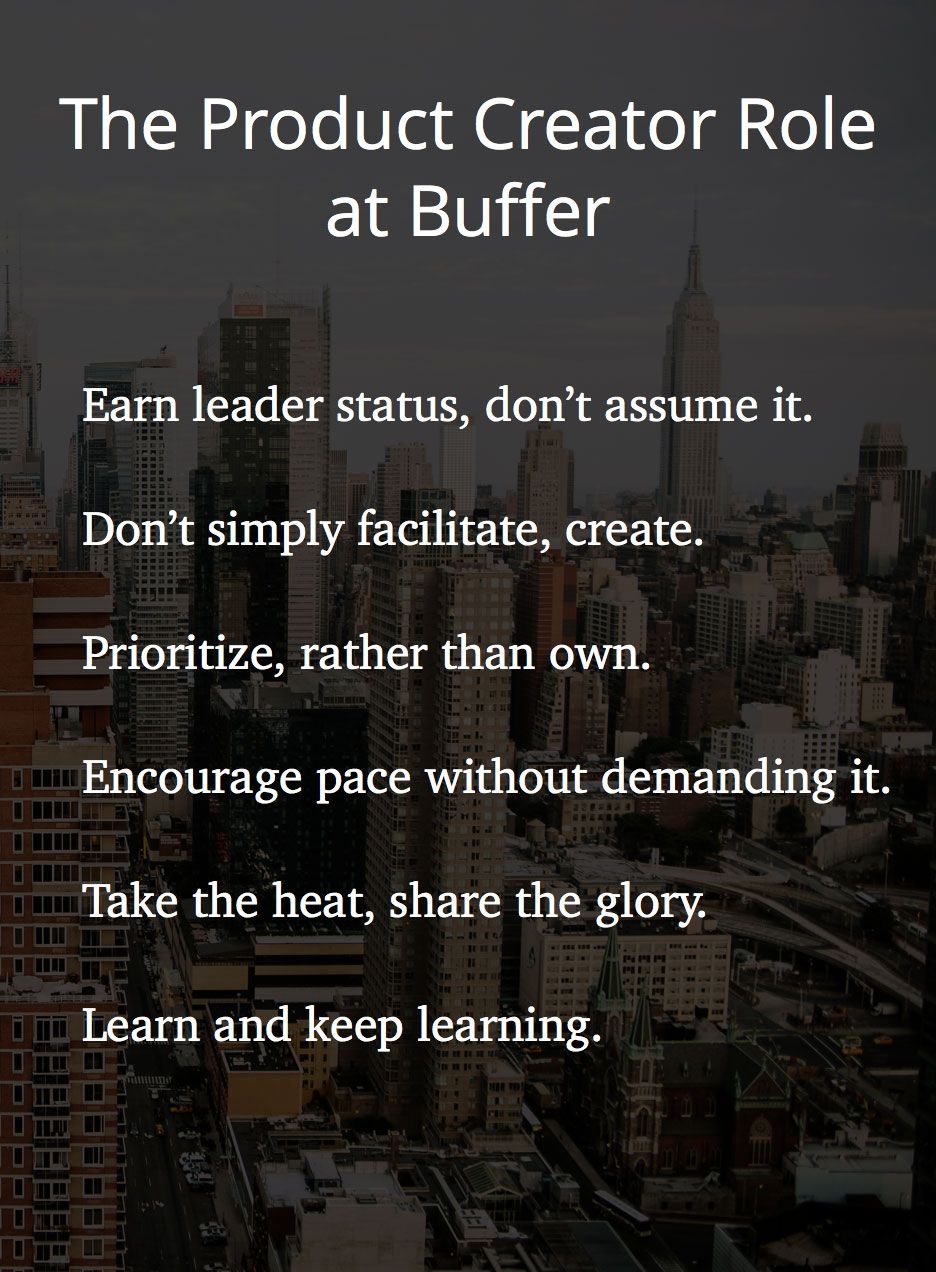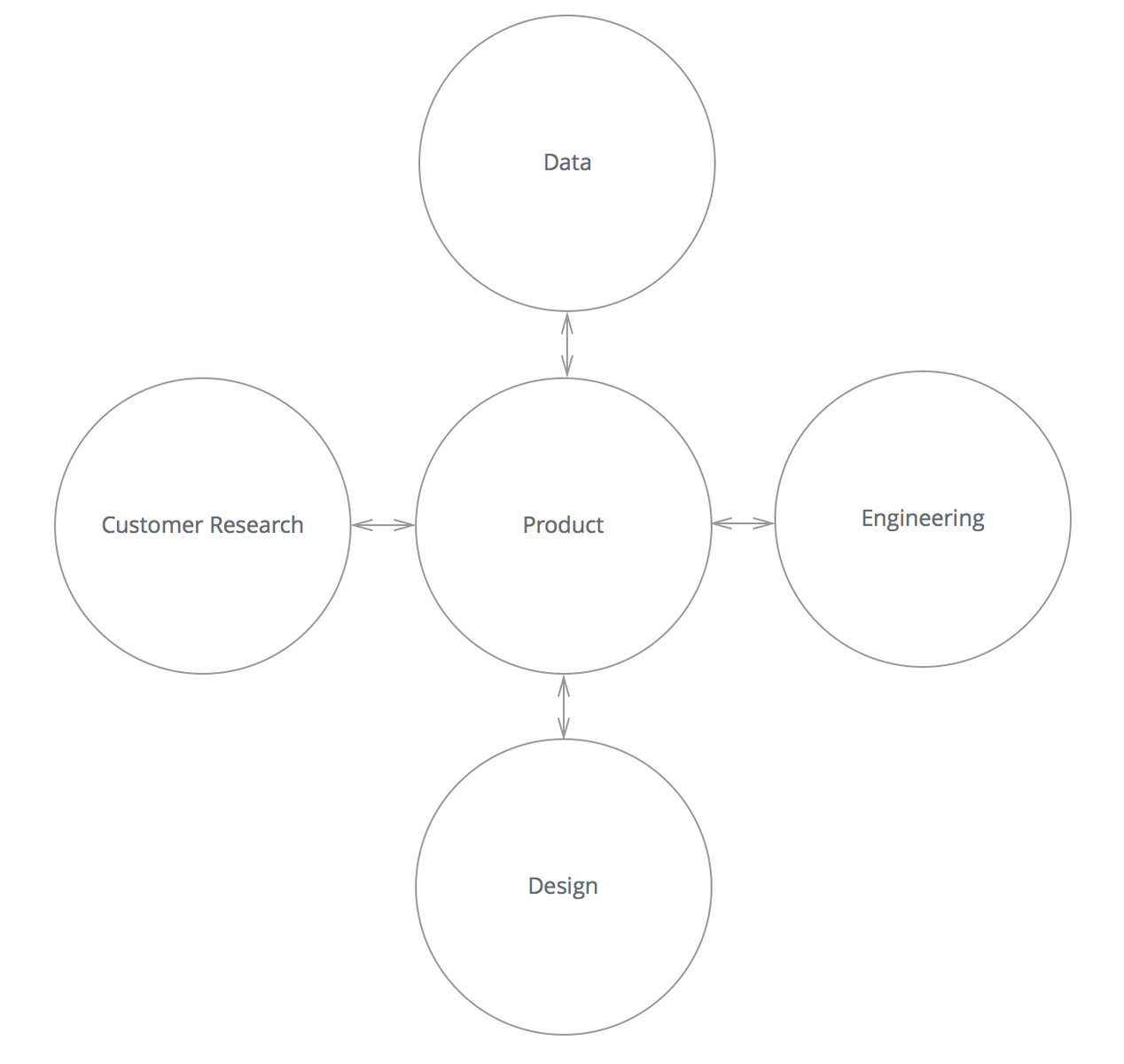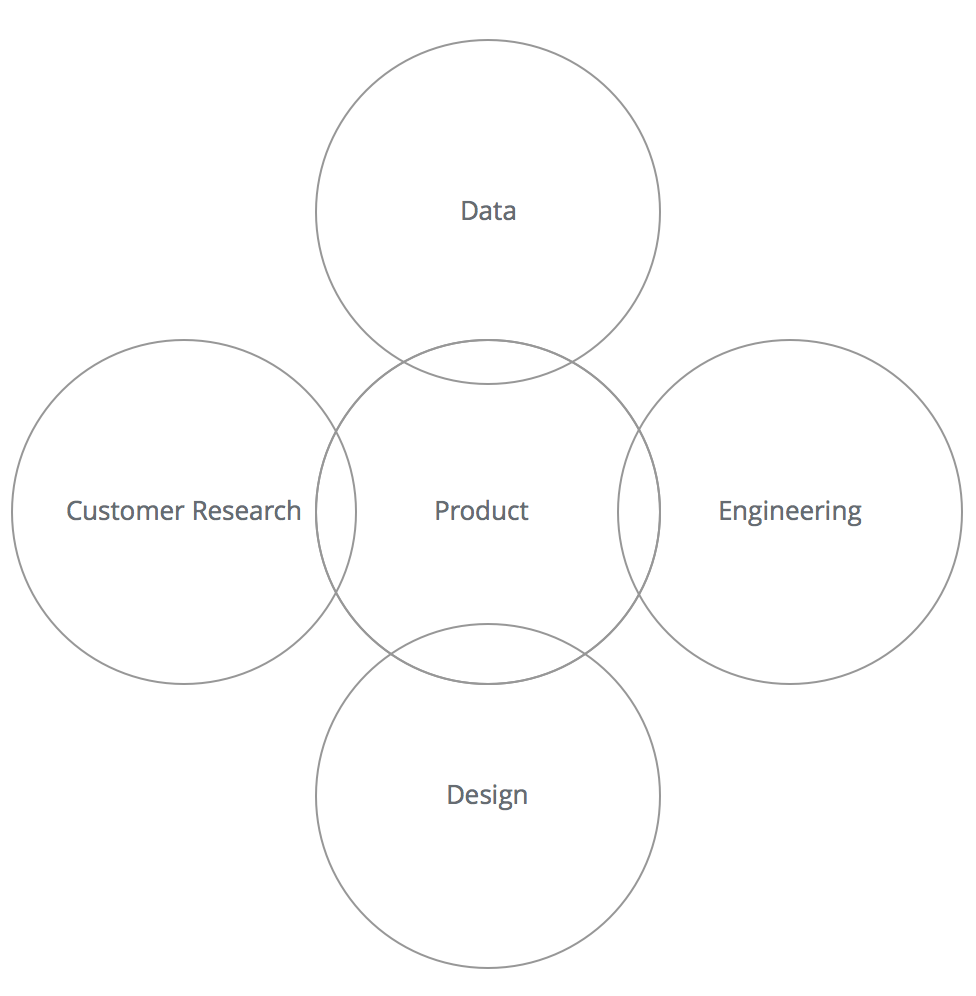The makeup of the Buffer product team is constantly in motion. We’re always evolving in search of the ideal team structure that helps us move as quickly as possible and make the most impact for the community.
I sat down recently and tried to articulate how we’re aspiring to approach one piece of the puzzle—–the Product Creator role. I want to share that with you today and get your thoughts!
As you may have seen, there’s no shortage of writing about product leadership. So this is simply a stab at sharing Our Way. We don’t claim to have figured it out, or even perfectly embody what you’re about to read. But this is a place that feels best for us, so we’re eager to share.
With that said, here’s a little peek into what it’s like to be a Product Creator at Buffer.

Earn leader status, don’t assume it.
The Product Creator is asked to lead a team of designers, developers, data analysts, researchers and others on the path of making Buffer the best it can be for the community and for the team.
In many ways, the unspoken theme goes something like this: Above all, create products the Buffer community will love, benefit from and happily pay for!
To do that is no small task. The ideal Product Creator has:
- A rapport with widely varied roles like engineering, design, customer success, etc.
- A deep internalization of Buffer’s vision and purpose
- Empathy for what our customers are out to accomplish on social media
- A sense of how the platforms and the marketing landscape are evolving
- The commitment to make Buffer better every day
- A growth mindset and drive to find the highest leverage opportunities available
When all of these things work together, we find that natural leadership is on display.
Don’t simply facilitate, create.
At Buffer, Product Creator is an intentionally unique title. Where some might choose Product Manager or Product Owner, we chose the word ‘Creator.’
Why? Because Product Creators are a key role on the team, not a facilitating role above the team. Said another way, the creator is a fellow maker, not simply a decision maker. They’re ready and capable to move forward at pretty much any step of the process.
A few examples:
- A Product Creator wouldn’t fully design every piece of a new feature, but they would open up Sketch and wireframe a workflow that clearly communicates the idea.
- A Product Creator wouldn’t write code for a new report, but they would know enough about charting packages and their capabilities to understand how the choice affects the end result.
- A Product Creator wouldn’t talk to 20 customers about a research question, but they would reach out to 1-2 key customers per week to have an open-ended conversation about social media marketing.
- A Product Creator wouldn’t take on sole responsibility for creating and analyzing a cohort analysis of a new pricing test, but they would open a data set and tweak the criteria to better understand the results.
- A Product Creator wouldn’t write a whole 8-part email nurturing series, but they would do a rough draft of a feature launch email that simply needs some editing before sending to a key customer segment.
Here’s one way we visualize this.
Traditional Product Management:

The Buffer Product Creator:

Prioritize, rather than own.
Ideas and insights come from everywhere: Blog comments, happiness heroes, vision set by Joel and Leo, passionate customers, customer development, data analysis, business development, social network evolutions and more.
All inputs are valid, and we have a lot of them being as transparent (and as curious) as we are.
What matters most is how we unpack an idea and discern the opportunity in it. What’s our current appetite (and need) for core improvements, expanding features and venture risk? It’s the Product Creator’s domain to creatively pursue growth and product improvements, even with limited time and resources.
Encourage pace without demanding it.
Our process is light, so we rely on communication and mutual respect to keep things moving and stay focused.
Many times it’s the Product Creator who feels the pressure and accountability to the rest of the business to deliver the project on time.
This compels him or her to seek out status updates, to ask how we can be more lean, to ask how we can condense timelines, etc.
Take the heat, share the glory.
When things go wrong, the Product Creator seeks to learn and share the mistakes they made along the way. Maybe they didn’t ask for the right audience in a round of research, didn’t analyze the alternatives well, etc.
When things are good, the Product Creator brags on the amazing team that made the project happen. The engineers who hustled, the designers who broke a sweat over each pixel, the data analyst who found the missing link, the researcher who talked to 100 customers.
Learn and keep learning.
Buffer isn’t asking for positive outcomes from every experiment, feature and product launch. Yes, we’re all working for growth, and we talk about those goals a lot.
But our immediate goal is to learn. And keep learning. And then come back for more.
In doing that, we believe we’ll become the best version of Buffer possible and share it with more people than ever.
What about you? Do you have a particular way you’ve found works to do product in your organization?
I’d love to hear all your thoughts in the comments.
And if you’re interested in being part of our team of Product Creators at Buffer, let’s chat!
Try Buffer for free
190,000+ creators, small businesses, and marketers use Buffer to grow their audiences every month.


